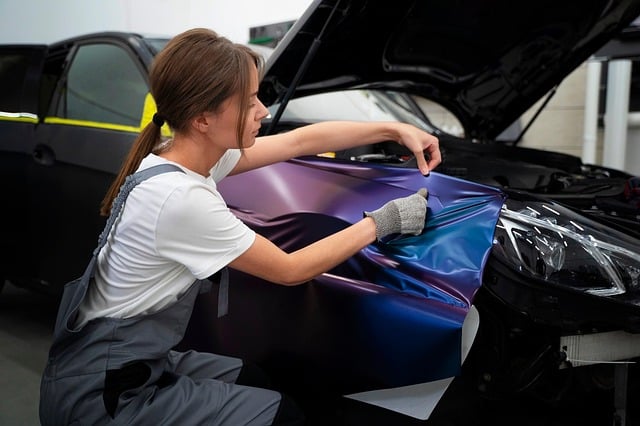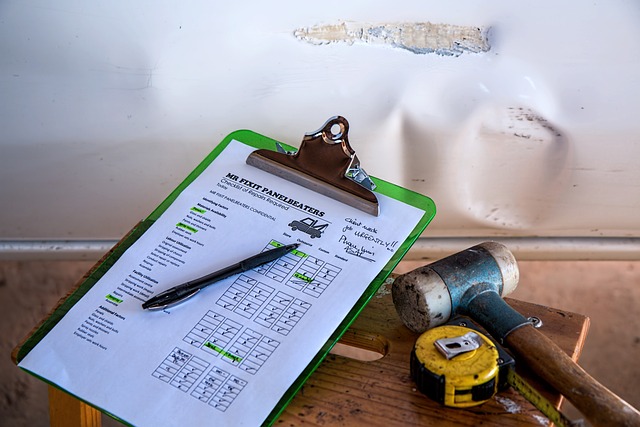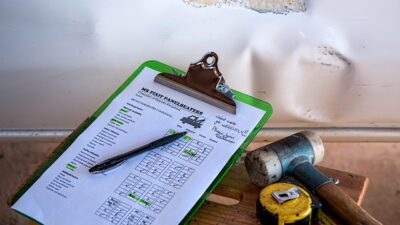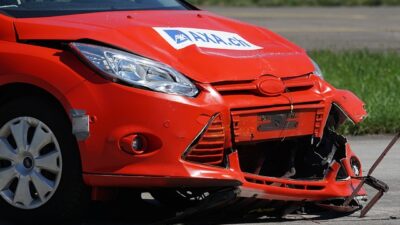Does Car Insurance Cover Windshield Damage Repair?

Windshield damage coverage is car insurance in the US that covers you if your windshield suffers from chips, cracks or breaks, covering repair or replacement. Most policies include coverage for rock, hail or debris damage and some even waive your deductible for repairs.
Options and rules can vary by state and insurer, so it’s useful to review your policy specifics. More on what’s covered, limits, how claims work below.
Understanding Your Windshield Coverage
Windshield coverage may seem straightforward on paper, but those specifics come into play when it’s time to file an auto glass claim. Insurance policies vary significantly across the U.S., making it essential to understand the types of car insurance coverage available, what they pay for, and which scenarios qualify for full windshield replacement.
|
Coverage Type |
Covers Windshield? |
Deductible? |
Typical Use Case |
Special Note |
|---|---|---|---|---|
|
Comprehensive |
Yes |
Sometimes (varies) |
Storms, theft, vandalism |
May offer zero-deductible in some states |
|
Collision |
Yes (if accident) |
Usually |
Deductible applies |
|
|
Full Glass |
Yes |
Often zero |
Any glass damage |
Not available in every state |
|
Liability |
No |
N/A |
Third-party damages |
Does not cover your own windshield |
1. Comprehensive
Non-collision windshield damage, such as from hail, rocks or vandalism, is covered by comprehensive car insurance. It’s the option for most drivers who desire a crutch for non-car-on-car incidents.
With full coverage, you don’t have to fret about those random windshield pocks or cracks from highway rocks in California. State laws may alter what’s covered. For instance, certain states mandate insurance companies to provide deductible-free glass replacement within comprehensive coverage, thereby rendering repairs or replacements more affordable for you.
It pays to compare, because some insurers are better glass-friends than others.
2. Collision
Collision insurance takes over if your windshield shatters in an accident. This coverage relates to accidents where your car collides with another car or object. It covers damage once you cross your deductible.
Collision coverage can add to your monthly premium, so you’ll want to balance that against how frequently you drive and where. A few policies specify whether windshield damage is handled separate from the rest of the vehicle, so take a look at specifics.
Both collision and comprehensive assist with windshield claims; for accidents alone, collision is your crutch.
3. Full Glass
Full glass coverage means you can repair or replace windshields with zero deductible, so you don’t have to cover the cost. This is an optional extra for your policy, and it’s not available everywhere—some states allow you to add it easily, others don’t.
Full glass coverage is often inexpensive, but read the fine print. Other plans merely cover repairs, not replacement. Others have limits on what they’ll pay.
State laws might dictate what defines “covered glass damage,” so make sure you check your state’s rules and your insurer’s offers before you commit.
4. Liability
It’s liability insurance for what you do to other people, not your own car. It never covers windshield damage to your own vehicle, so there’s a gap if that’s all you have.
If windshield protection is important to you, you’ll have to add comprehensive or collision coverage. Liability alone keeps prices down, but leaves you paying for your own windshield fixes.
That’s what matters for an insurance policy.
When Does Insurance Pay?
When does insurance pay for the windshield? If your windshield gets cracked or broken in a wreck, your insurer is often happy to pay for it. Ditto for damage from a storm, a falling branch, or flying debris. In LA, for instance, common hazards such as road gravel or rapid temperature changes can chip or crack it. These are generally covered under comprehensive coverage, while accidents come under collision. Understanding which kind you own does help set realistic expectations.
Most insurance companies will allow you to file a claim if the crack is longer than six inches. If a rock hits your windshield and the crack extends beyond that point, they will probably pay for an entire replacement. For minor cracks or small chips, repair is the initial consideration. Other policies include repairs with no out-of-pocket fee, but it really varies by location and plan.
In Florida, Arizona, and Kentucky—that is, zero-deductible states—the insurers have to replace or repair your windshield at no charge. In California, you pay a deductible unless your policy offers glass coverage.
Making a claim involves a few steps. You want to notify your insurer immediately. Waiting too long can provide the company with a pretext to deny your claim. Most would like information—pictures, the how it happened and the crack size. They’ll verify it meets the policy criteria, such as that six-inch rule.
If the damage is small and repairable, insurance might arrange a repair free of charge or at a discounted rate, depending on your coverage. Check your policy before you need it! Check for any exclusions or specialized terms regarding glass. Some policies pick and choose what kind of damage.
Some others may restrict the number of glass claims you can make in a year. In LA, with all those freeway miles, it’s wise to find out if you’ve got glass-only coverage or whether glass claims impact your rates. If you need to cover a deductible, it’s typically established by your coverage.
For some, it’s $100 or $250, for others, it might equal your collision deductible. Without the right coverage, you might be on the hook for the entire amount. Glass is hard to protect on the road—chips and cracks occur even to the most cautious drivers.
The Claim Process Simplified
Windshield damage claims, especially for broken windshields, are a dime a dozen for drivers in the U.S. We’ve designed the process to be simple, but specifics regarding windshield replacement insurance still count.
- Call your insurance company immediately to make a claim for the windshield.
- Give us your policy number and some information about yourself to check your coverage.
- Take clear photos of the damage for evidence.
- Collect incident or police reports if necessary for your claim.
- Save any emails, texts or letters exchanged with your insurer.
- Book an inspection with an insurance approved technician.
- Check your deductible, as certain states mandate zero-deductible repairs.
- Confirm repair or replacement costs and warranty offers.
- Choose a service time that fits your routine.
- Submit all documents and wait for claim approval.
Initial Steps
Begin by gathering all information regarding your insurance and your windshield damage. Have your policy number, contact info, and a brief description of what happened – this makes the process quicker.
Call your insurance company immediately upon noticing the damage. Most insurers allow you to submit claims via the Internet or phone, and it can take minutes. It’s useful to take a few pictures that frame the crack or chip from a couple of angles.
If it occurred in a parking lot or post-storm, document the time and location in your description. Keep every email or text that you exchange regarding the claim. This can assist if questions arise later or if another agent handles your case.
The Inspection
Once your claim is open, an inspection will be required to determine if your windshield requires repair or a complete replacement. The insurance companies can usually send you to a certified technician, or they may allow you to choose from their list of approved shops.
Inspection results will determine if you receive a repair or new windshield. For instance, a quarter-sized chip usually gets fixed and a long crack requires a replacement.
If you can, be there during the inspection. This allows you an opportunity to inquire regarding the procedure, fees or timeframe. The technician will complete a report that your insurer requires for approval.
Ensure the inspection complies with company policies, or your claim can be postponed.
Scheduling Service
- Never choose a repair shop from the insurer’s list.
- Double-check the shop’s credentials before booking.
- Schedule for a time that won’t interfere with work or family plans.
- Ask about warranties for both repair and replacement.
Because many insurance companies employ predetermined repair rates for auto glass claims, you’ll have an idea of what to expect. Certain states mandate zero-deductible coverage for comprehensive auto insurance, so confirm before you shell out.
Communication Tips
Keep in touch with your insurer throughout. Fast replies keep the momentum going. If your claim is stalled — request updates or check their online portal.
If you pay out-of-pocket, keep receipts for reimbursement. Keep notes from each call or meeting.
Repair Versus Replacement

The decision between repair and full windshield replacement hinges on the damage’s type and severity, alongside safety considerations for the driver and passengers. While small chips and cracks can often be addressed through auto glass repair quickly and affordably, significant or severe damage usually indicates that replacement is the safer option. U.S. insurance policies generally cover both options, though specifics vary by carrier and region.
Damage Assessment
-
Check the size and type of the damage. Chips smaller than one inch and cracks under three inches are usually repairable, but anything longer than six inches will likely need a full replacement.
-
If the crack is squarely in your line of sight or close to the glass edge, replacement is usually the safest bet. Damage to critical vision regions could impact your driving vision.
-
Once the initial evaluation has been made, chat with your repairman. They can illustrate what must be done and assist in considering the repairs vs. replacement tradeoffs.
-
The age and condition of your windshield too. Older glass, or glass with multiple damaged locations—more than two, for example—tends to make replacement your better bet in the long run.
Safety Systems
Many new vehicles employ windshields as an integral portion of the safety system. These might be sensors or cameras for lane keeping, automatic emergency braking, etc. Neglecting to reset these systems following a replacement can cause them to fail.
Is your service provider dealing with advanced driver assistance systems? Not every shop is set up for this, so verify in advance. Prioritize safety features, particularly if your car depends on these systems for everyday driving.
Your Policy
-
Depending on your insurance, it may cover repairs, replacement, or both. Others have waivers of the deductible if it’s a repair but not for replacement.
-
Understand the deductible and any caps associated with windshield claims. Generally, repairs run $50 to $150 out of pocket if it’s not covered by insurance, but replacement is higher and might be totally covered by your policy.
-
Shop policies annually and see what works best for you, particularly if you’re a driver that hits a lot of road debris or congestion.
-
Check with your insurance agent to be sure you know all the specifics before you file a claim.
The Financial Bottom Line
Windshield damage can be a small hassle or a big cost, depending on how you address it. Living in L.A., where road debris and unexpected storms can leave you with chips or cracks, motorists consider the expense of auto glass repair versus their insurance coverage. Understanding your out-of-pocket costs, how claims affect your insurance premiums, and if comprehensive auto insurance is right for you can assist in making informed choices regarding windshield replacement.
|
Service Type |
Typical Cost (USD) |
|---|---|
|
Windshield Repair |
$50–$150 |
|
Windshield Replacement |
$350–$550 |
Deductible Costs
Deductibles are a hard number that comes out of your pocket before insurance starts taking over. For most coverage, U.S. Deductibles run from $250 to $1,000. Say your car’s worth $5,000 and you have a $2,000 deductible, your insurance caps at $3,000 for a claim. That can tip the calculation for smaller fixes.
Say your deductible is $500 and a new windshield will run you $400. Insurance won’t pay, so you foot the entire bill. If replacement runs $550, you pay $500 and insurance handles $50. Most policies allow you to choose lower deductibles for glass damage, sometimes as low as zero. However, the lower your deductibles, the higher your premium.
Selecting the appropriate deductible involves considering your car’s value and the risk of potential claims. If you select a high deductible but keep taking pummeling from freeway traffic, you could pay more out of pocket in the long run.
Premium Impact
Windshield claims can bump up your premium, but not always. Some insurers in California and other states will allow one glass claim to slide without going after your rate, particularly if you have accident forgiveness. Yet if you file multiple claims in a short span, your six-month premium may surge when your policy renews.
A wise decision is to shop your current premium against quotes post-claim. If the hike is greater than the cost of repair, paying it yourself might be the smarter move.
Out-of-Pocket
If your policy doesn’t cover full glass, you get the repair bill. Most shops in L.A. Ask $50–$150 to fix and $350–$550 for replacement. Budget for these expenses, particularly if you have a high deductible. Certain repair shops even provide payment plans if you can’t pay upfront.
Full glass coverage can eliminate out-of-pocket expenses, which is great if you spend a lot of time on the road in loose gravel or construction zones.
The Hidden Risks of Neglect

Ignoring windshield damage can be more troublesome than most drivers assume. Small chips or cracks appear innocent enough at first, but they can spread fast. In most parts of the U.S., you can be fined or fail a vehicle inspection for driving with a really damaged windshield. Several states have stringent safety checks that will not pass a vehicle if the windshield is cracked in the driver’s line of sight or if the crack extends beyond 6″.
Take the weather in Los Angeles, for instance; it can be very hot during the day and cool at night. This can cause even small cracks to spread as the auto glass expands and contracts.
A broken windshield can imperil us all in the car. The windshield isn’t just for wind or bugs. It accounts for 45% of the car’s integrity during a crash and 60% during a rollover. If the glass is weak, the roof can cave in more readily.
In a frontal accident, a sturdy windshield keeps occupants in the vehicle. Little tiny chips can usually be repaired, but if left untreated, they can expand into big huge cracks. That frequently equates to a full windshield replacement — which is far more expensive than a quick fix.
It’s even more risky when you’re driving through a storm or at night. Rain, fog, or headlights make it difficult to detect a crack or chip. Windshield cracks can create glare or weird reflections, particularly in bright sun or from street lamps.
This can render it difficult to identify road hazards or read signs. For motorists in congested urban areas or on the highway, it can increase accident risk.
Insurance can also get complicated if you neglect repairs. Most auto insurance policies pay for broken glass, but only if it’s repaired promptly. If damage is left too long, an insurance company might view it as neglect and refuse to cover it later.
This can result in you paying for repairs or even liability out of pocket. A history of neglect can impact your insurance premiums or potential claims down the line as well.
Drip pricing may be killing your resale value. A cracked windshield is just one indication that the car has been neglected. Buyers may walk or dealers offer less money.
Conclusion
Windshield damage comes whipping at you at lightening speed on Los Angeles freeways. Chips and cracks can extend rapid. Most CA auto policies cover glass repairs, sometimes with no deductible on small repairs. Claim filing requires a few simple steps. Most shops around LA can patch or swap out glass in under a day, so you’re back to your life quick. Minor fixes are cheaper than a new windshield, and neglecting them can lead to higher expenses later or even a citation. Fondling your policy now saves heartache later. Merged: GotchippedAorCcracked! Prompt coverage saves money and your ride. Contact your agent if you have questions or want to confirm your coverage.
Frequently Asked Questions
Does my auto insurance cover windshield damage?
In the U.S., most full coverage auto insurance policies include comprehensive auto insurance that covers windshield damage. Verify your insurance policy or call your insurer.
Will I have to pay a deductible for windshield repair?
Most insurers will excuse the deductible on windshield repairs if you have comprehensive auto insurance; however, for full windshield replacement, you’ll likely need to pay your deductible.
When should I repair versus replace my windshield?
Small chips or cracks, often smaller than a dollar bill, can frequently be repaired through auto glass repair. However, bigger cracks or damage affecting the driver’s line of sight usually require a full windshield replacement.
How do I file a windshield damage claim in Los Angeles?
Call your insurance company to initiate your auto glass claim, send photos of the damage, and follow their instructions for a smooth process!
Does filing a windshield claim affect my insurance rates?
Typically, a glass claim for windshield damage will not increase your auto insurance premium, especially if it’s a no-fault event. Confirm with your insurer.
What happens if I ignore a chipped or cracked windshield?
Procrastinating on repairing a broken windshield will only cause cracks to spread, increasing repair costs and safety risks. In California, driving with a damaged windshield can lead to a ticket.
Can I choose my own repair shop for windshield replacement?
Yes, California law allows you to choose your own auto glass repair shop for windshield replacement, although your insurer might recommend providers.


